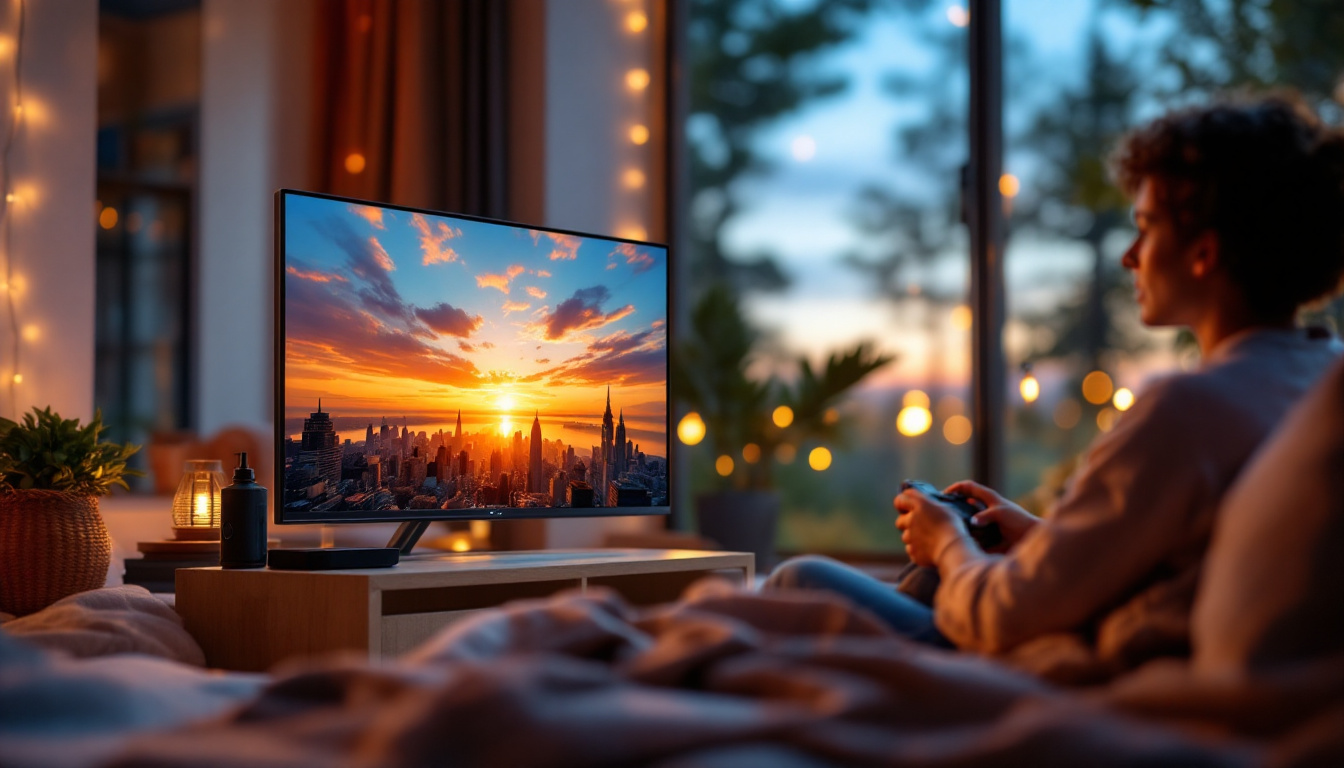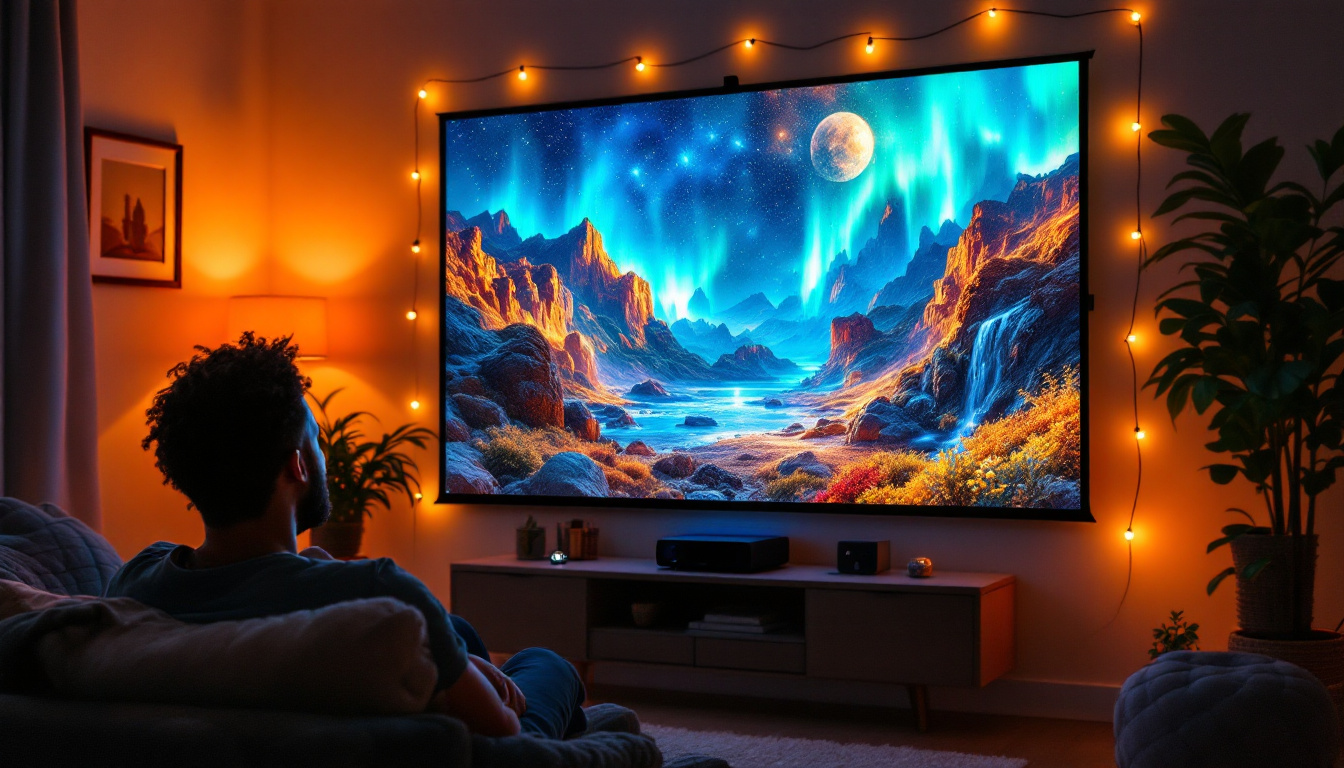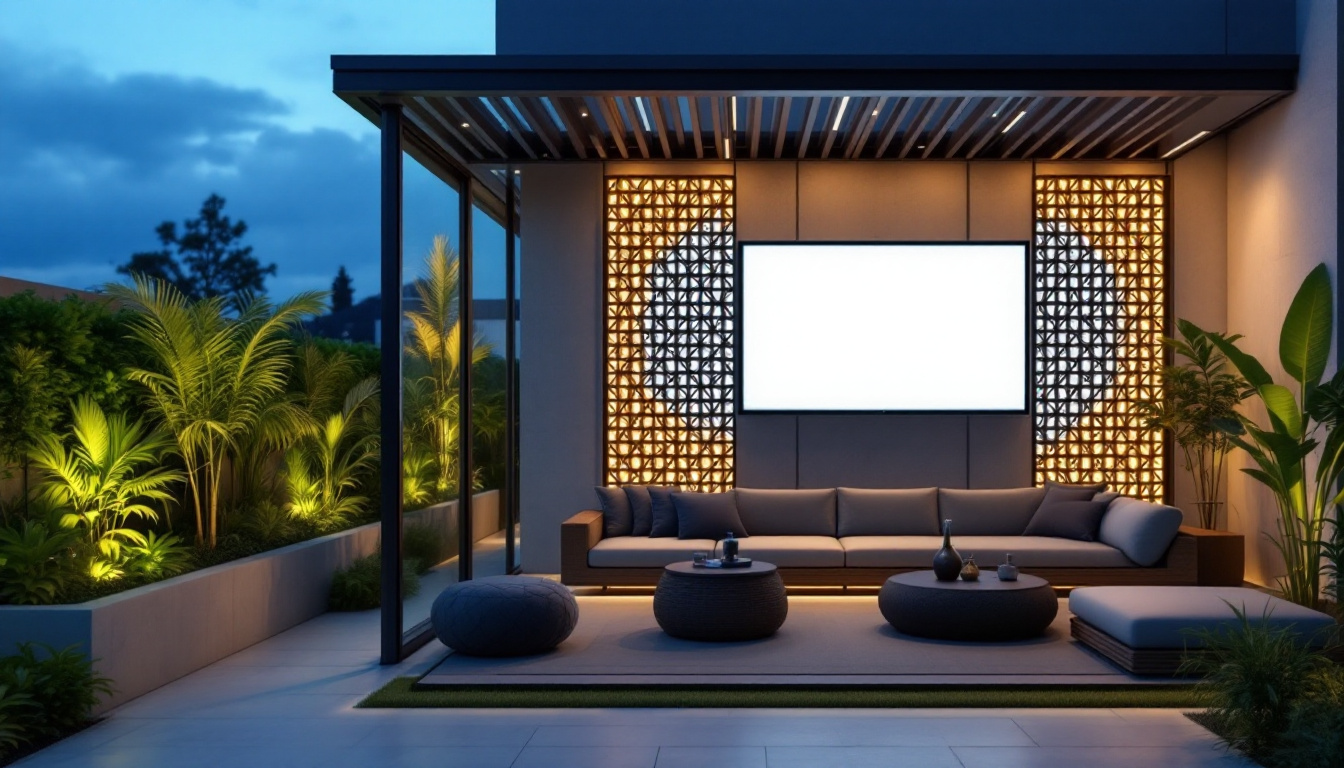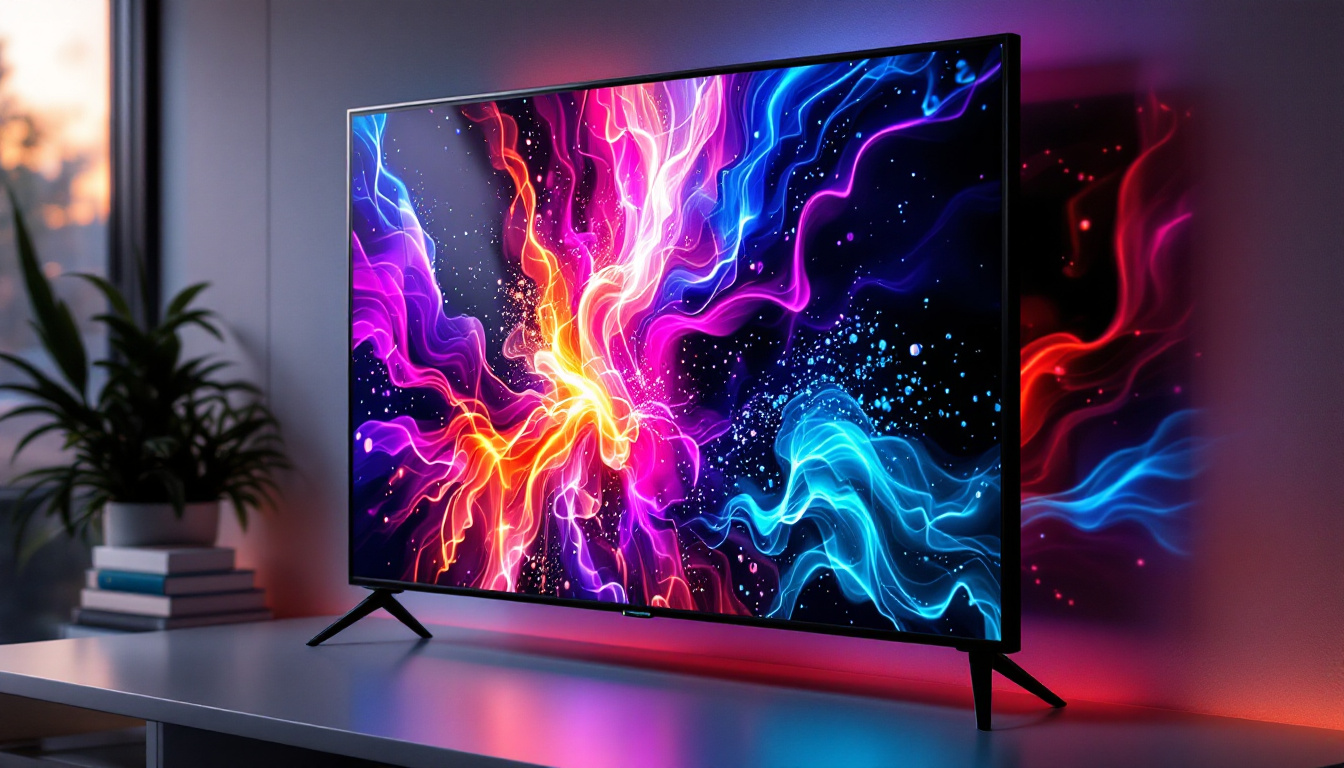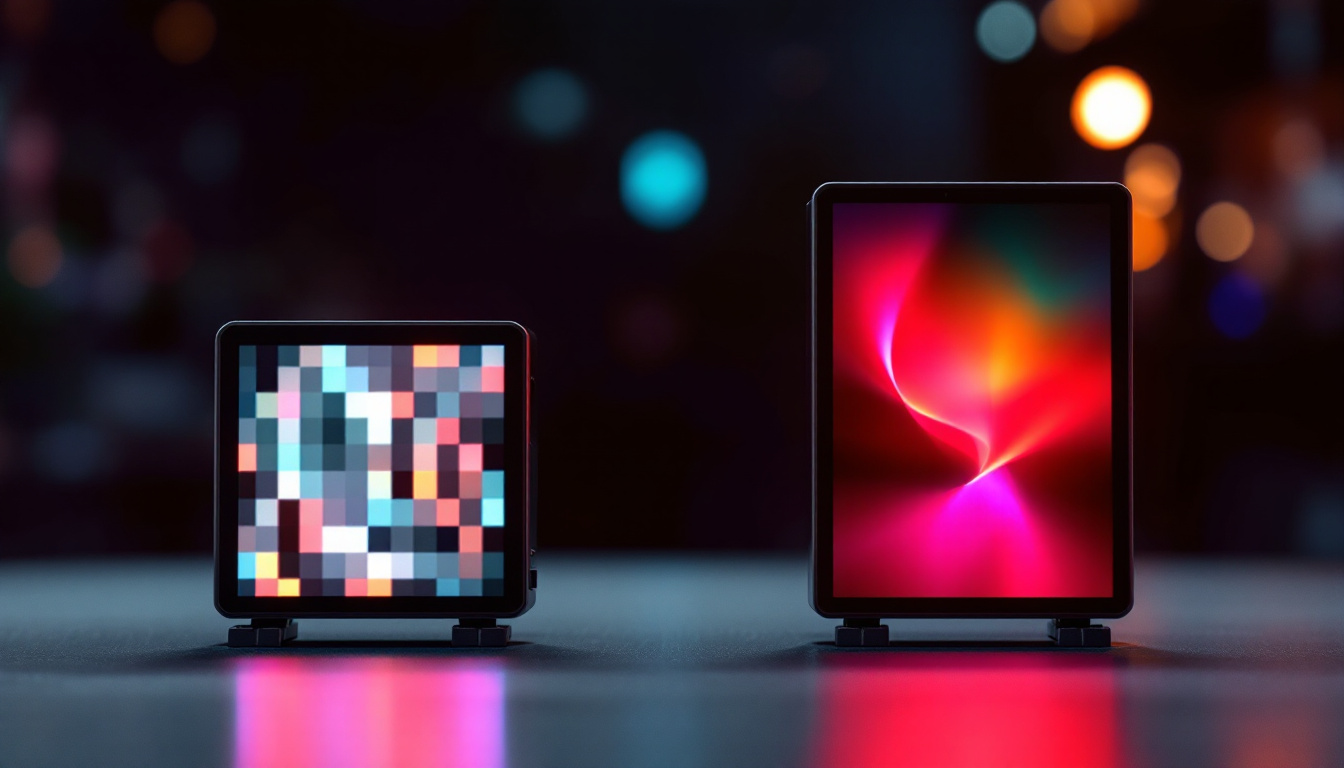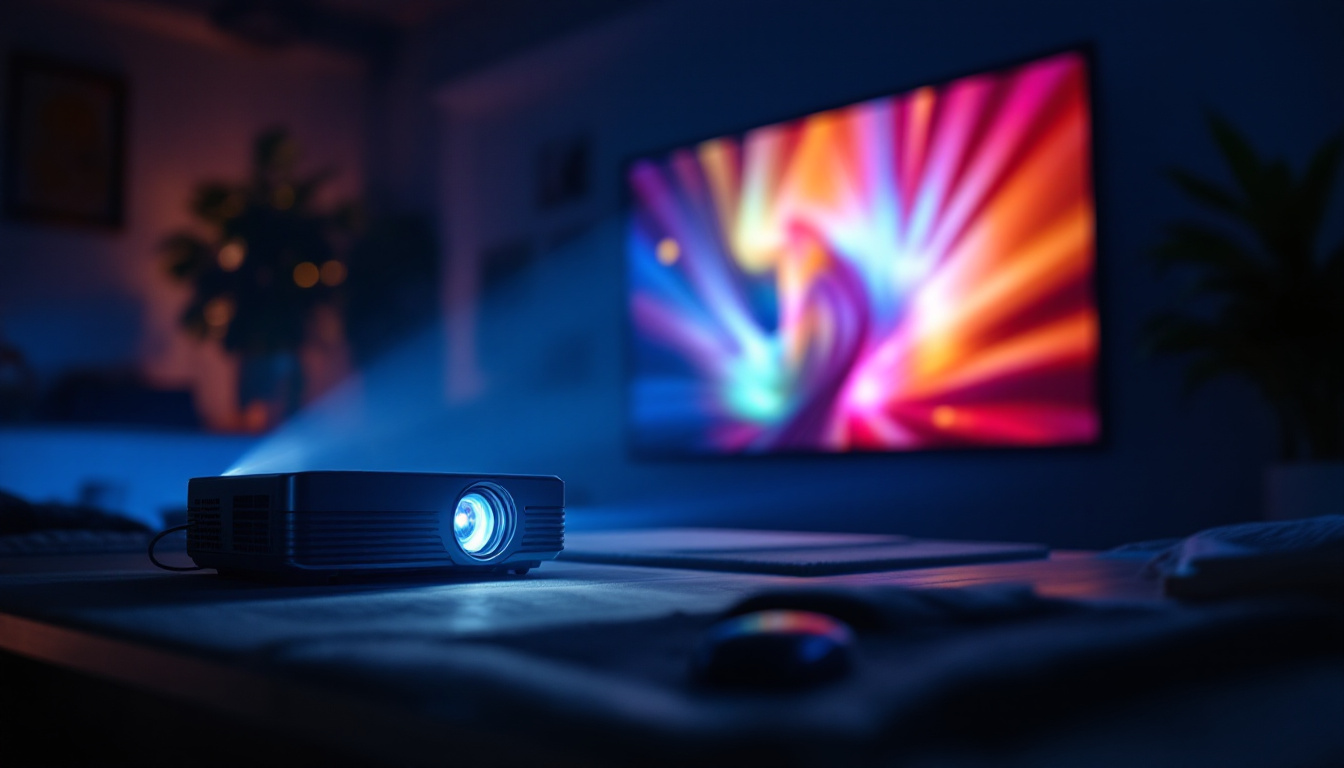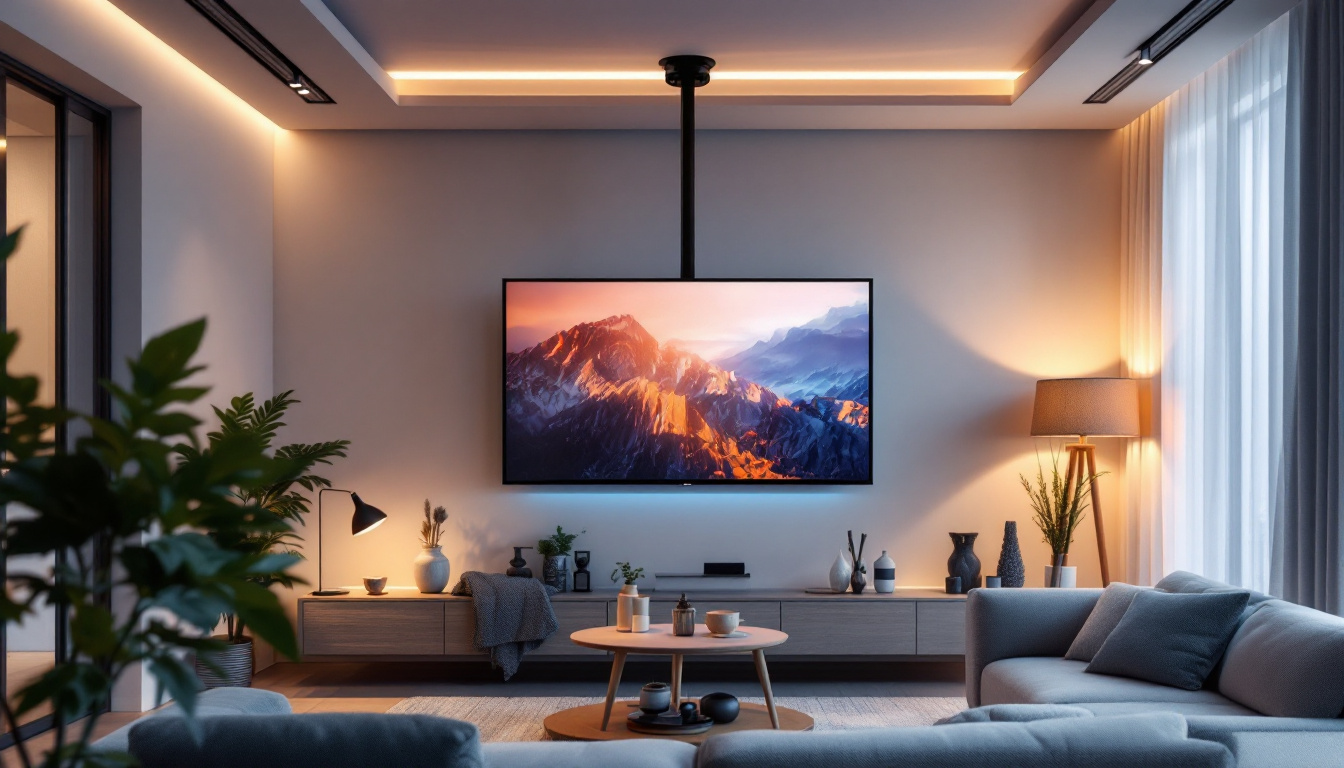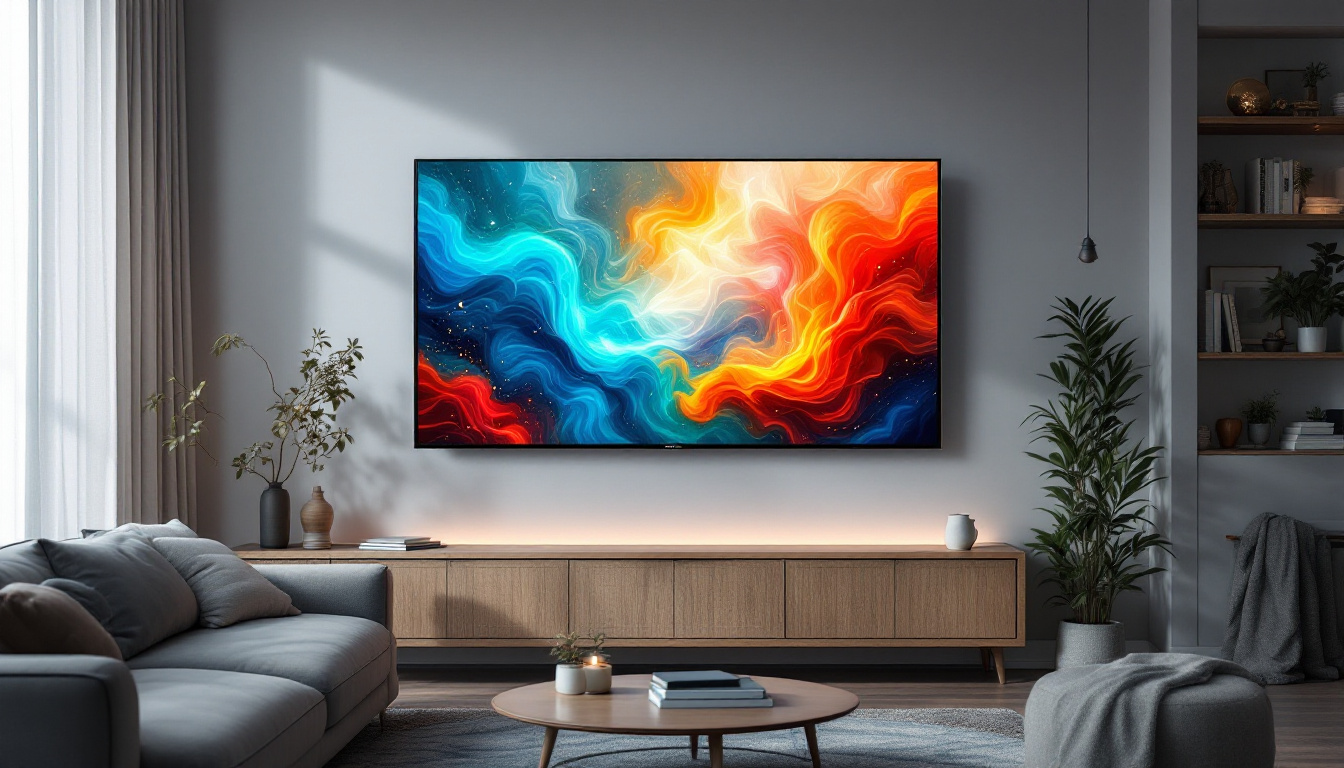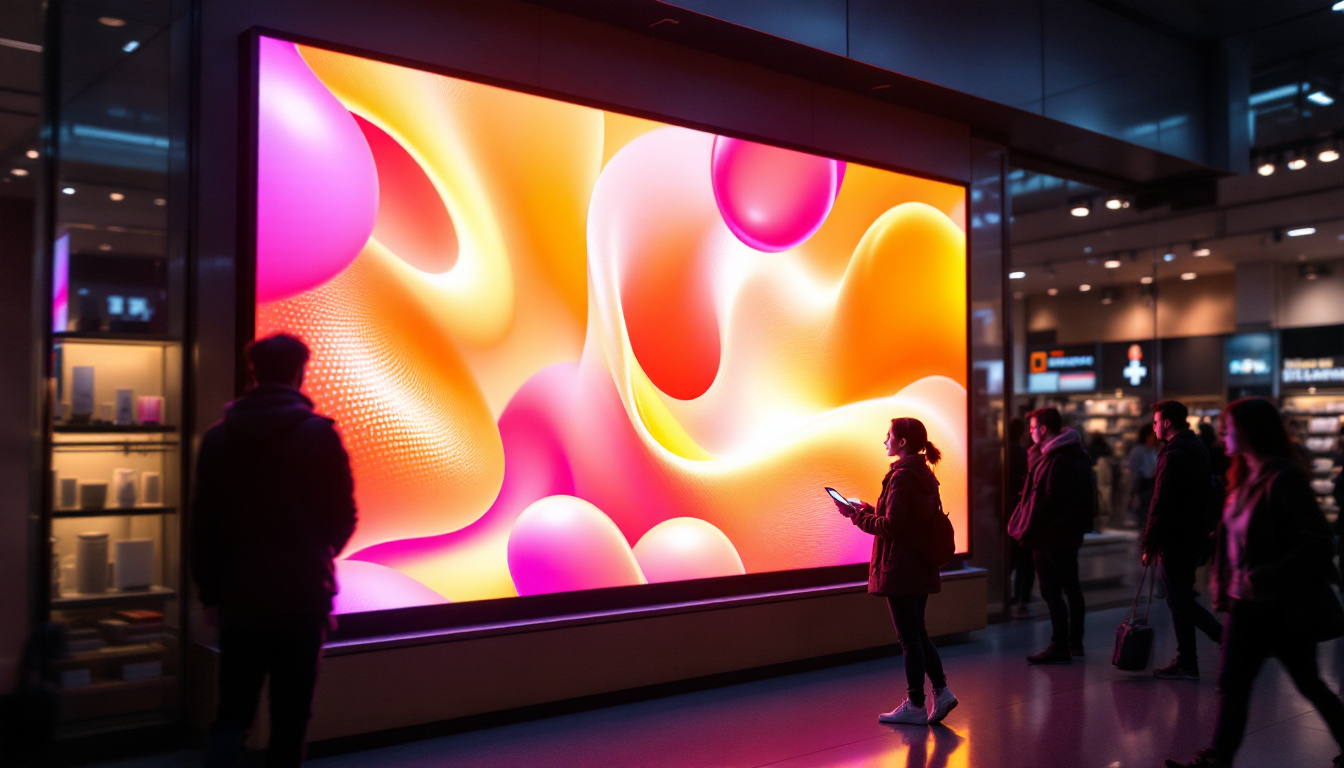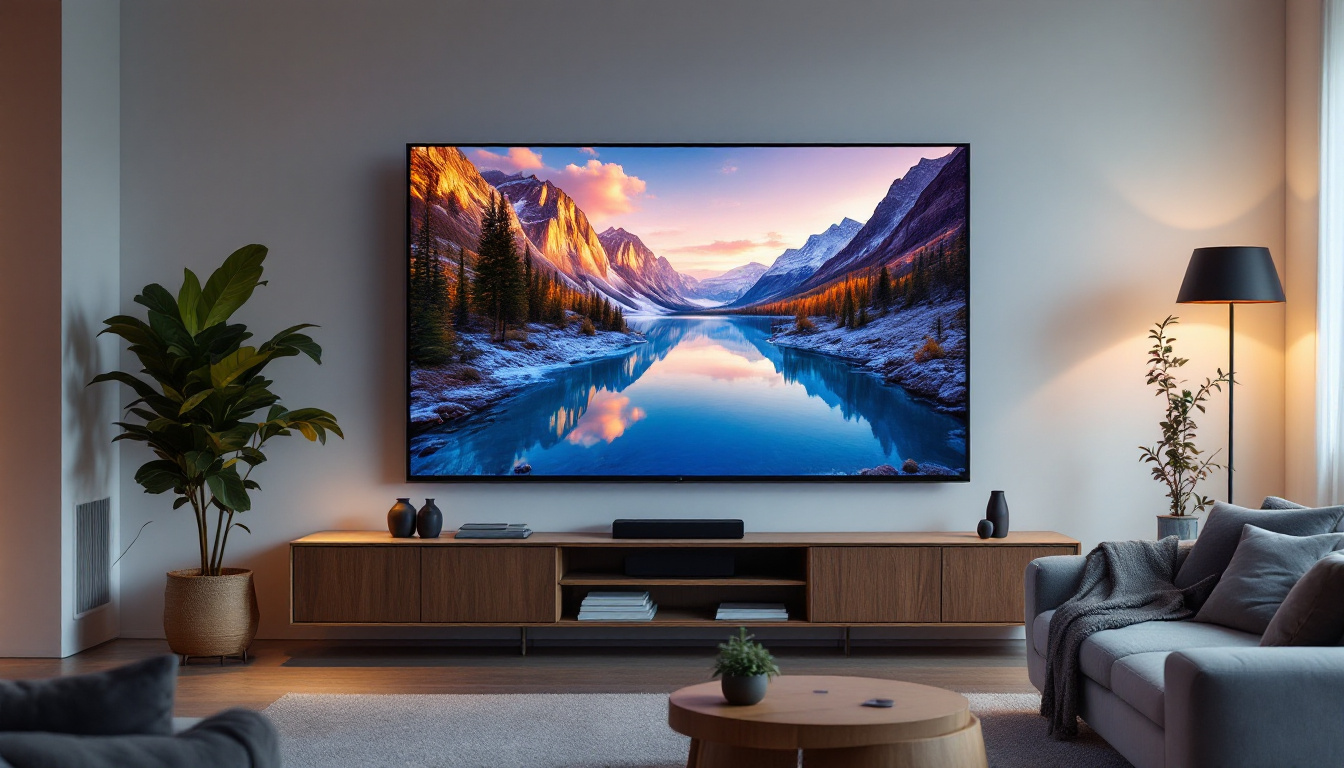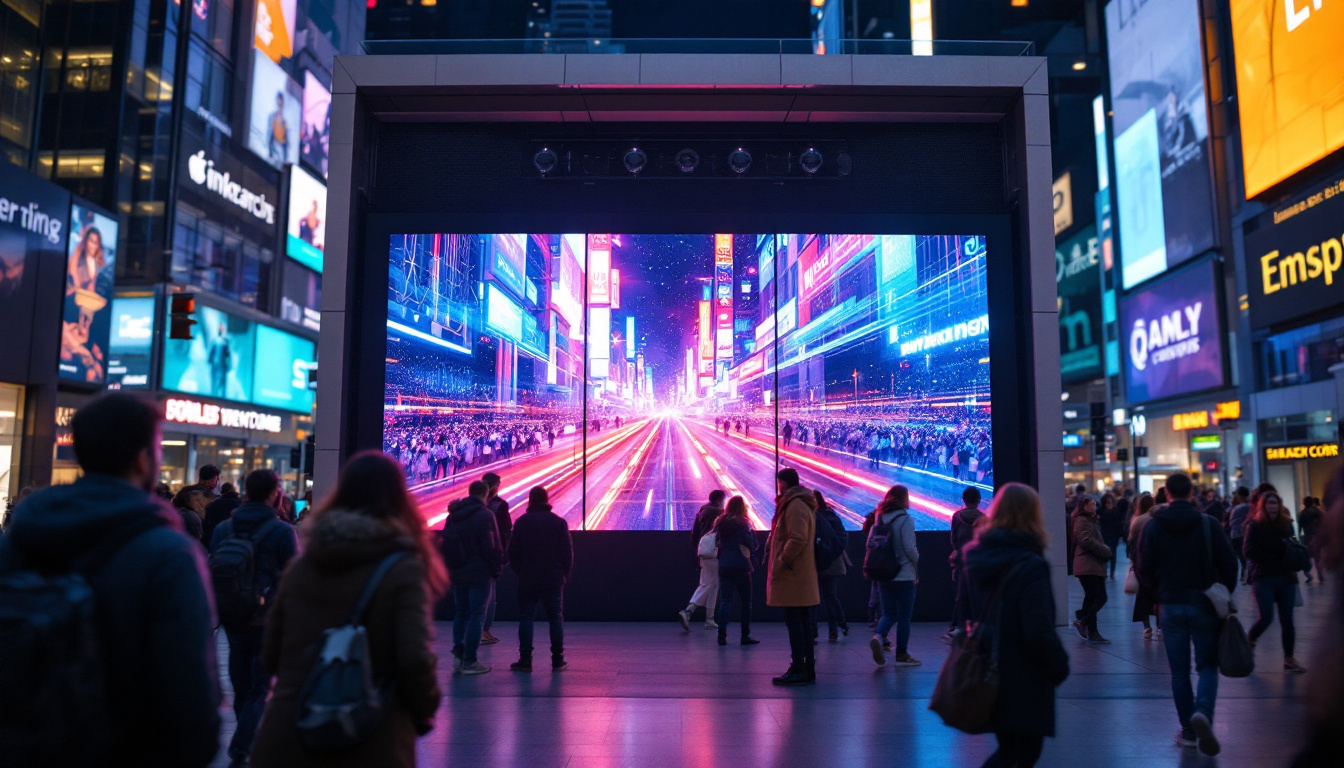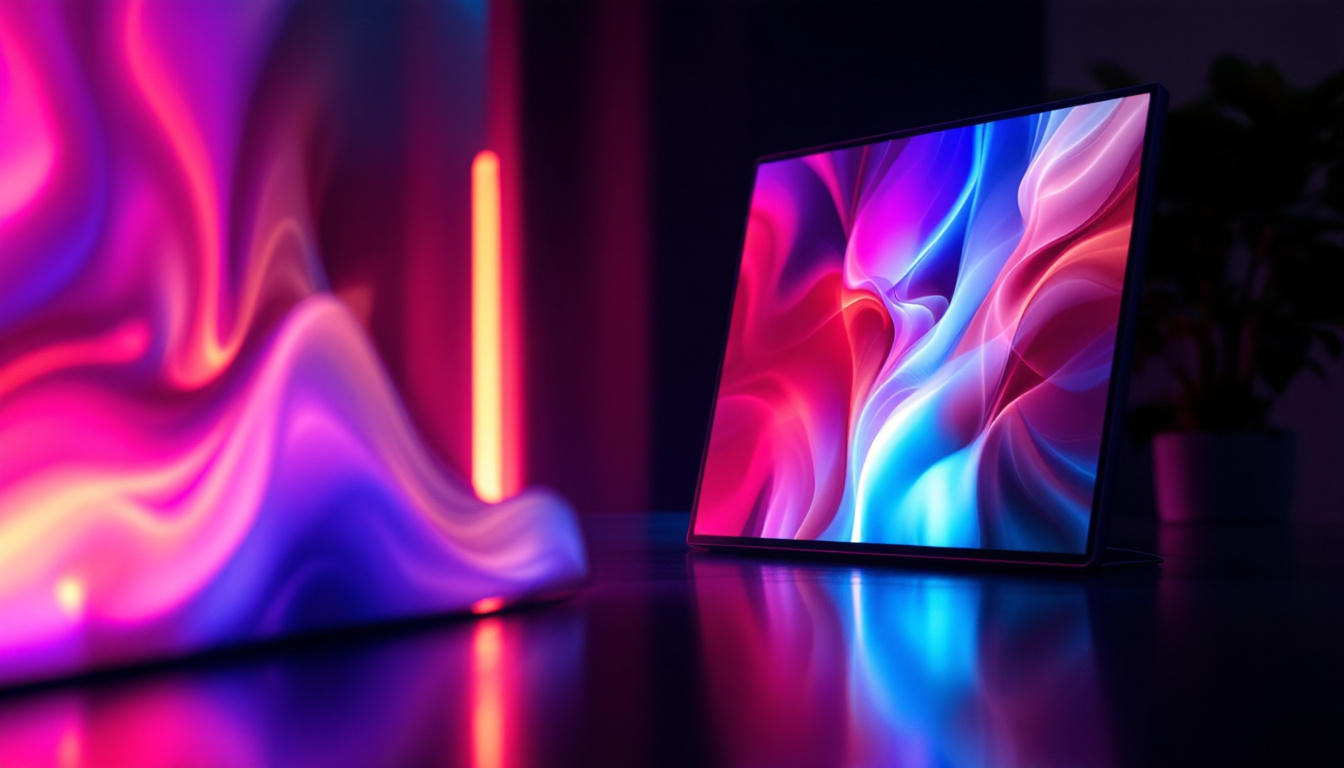Portable TVs: LED Display Explained
In an age where mobility and convenience are paramount, portable televisions have emerged as a popular choice for entertainment on the go. These compact devices offer the ability to watch your favorite shows, movies, and sports events anywhere, anytime. At the heart of these portable TVs is the LED display technology, which plays a crucial role in delivering vibrant visuals and energy efficiency. This article delves into the intricacies of LED displays in portable TVs, exploring their advantages, features, and the technology behind them.
Understanding LED Display Technology
LED, or Light Emitting Diode, technology has revolutionized the way we experience visual media. Unlike traditional LCD screens that rely on fluorescent backlighting, LED displays use an array of tiny diodes to produce light. This fundamental difference results in several key advantages that enhance the viewing experience.
How LED Displays Work
At its core, an LED display consists of a matrix of pixels, each made up of red, green, and blue diodes. By varying the intensity of these diodes, the display can create a wide spectrum of colors. This process is known as additive color mixing. When combined with advanced technologies such as local dimming and HDR (High Dynamic Range), LED displays can produce deeper blacks and brighter whites, resulting in stunning image quality.
Moreover, there are two main types of LED displays: edge-lit and full-array. Edge-lit displays use LEDs positioned along the edges of the screen, while full-array displays have a grid of LEDs behind the entire screen. Full-array displays generally offer better contrast and uniformity, making them a preferred choice for high-end portable TVs. The advancements in LED technology have also led to innovations such as microLED and miniLED, which promise even greater color accuracy and brightness, further pushing the boundaries of what is possible in display technology.
Benefits of LED Displays in Portable TVs
One of the primary advantages of LED displays in portable TVs is their energy efficiency. Compared to traditional displays, LED technology consumes less power, which is essential for devices that rely on battery life. This efficiency allows users to enjoy longer viewing times without the constant need for recharging.
Additionally, LED displays are known for their thin and lightweight design. This characteristic makes portable TVs easy to carry and transport, catering to the needs of users who enjoy outdoor activities, travel, or simply want a secondary screen for their home. The durability of LED technology also contributes to its appeal; these displays are less prone to damage from impacts compared to their glass-based counterparts, making them ideal for on-the-go lifestyles. Furthermore, many portable LED TVs now come equipped with smart features, allowing users to stream content directly from the internet, access apps, and connect to other devices seamlessly, enhancing their overall entertainment experience.
Key Features of Portable LED TVs
Portable LED TVs come equipped with a variety of features that enhance their functionality and user experience. Understanding these features can help consumers make informed decisions when selecting a portable TV that suits their needs.
Screen Size and Resolution
Portable TVs are available in various screen sizes, typically ranging from 10 inches to 32 inches. The choice of screen size often depends on the intended use; smaller screens are ideal for personal viewing, while larger screens can accommodate group watching. Resolution is another critical factor, with options including HD (720p), Full HD (1080p), and even 4K in some high-end models. Higher resolutions provide sharper images and more detail, enhancing the overall viewing experience. Additionally, many portable TVs now feature advanced display technologies such as IPS (In-Plane Switching) panels, which offer wider viewing angles and improved color accuracy, making them suitable for diverse viewing environments.
Connectivity Options
Modern portable TVs are designed to be versatile, offering a range of connectivity options. Most models come with built-in Wi-Fi and Bluetooth capabilities, allowing users to stream content from their favorite apps or connect to other devices such as smartphones and tablets. Additionally, HDMI ports and USB inputs are commonly included, enabling users to connect external devices like gaming consoles or USB drives for added functionality. Some models even support screen mirroring, allowing users to display content from their mobile devices directly onto the TV screen, which is perfect for sharing photos or videos during gatherings.
Battery Life and Portability
Battery life is a crucial consideration for portable TVs, as it directly affects how long users can enjoy their favorite content without being tethered to a power source. Many portable models boast impressive battery life, often ranging from 3 to 8 hours, depending on usage and screen brightness. Furthermore, lightweight designs and foldable stands enhance portability, making it easy to set up and enjoy entertainment in various environments, from camping trips to backyard barbecues. Some portable TVs even come with rugged designs and water-resistant features, making them ideal for outdoor use. With built-in handles or carrying cases, these TVs are designed for easy transport, ensuring that entertainment is always within reach, no matter where the adventure leads.
Comparing Portable LED TVs with Other Display Technologies
While LED displays dominate the portable TV market, it’s essential to compare them with other display technologies to understand their unique advantages. This comparison highlights why LED remains a popular choice among consumers.
LED vs. LCD
Though often confused, LED and LCD are not the same. LCD (Liquid Crystal Display) screens use liquid crystals to produce images, relying on a backlight for illumination. LED displays, as previously mentioned, utilize diodes for backlighting, resulting in better contrast, color accuracy, and energy efficiency. This distinction makes LED displays more appealing for portable TVs, where battery life and image quality are paramount. Furthermore, LED technology has advanced significantly, with features like local dimming and edge-lit designs enhancing the viewing experience even further. These innovations allow for a more vibrant display, making LED screens ideal for watching movies or playing games on the go.
LED vs. OLED
Organic Light Emitting Diode (OLED) technology is another contender in the display market, known for its exceptional color accuracy and deep blacks. Unlike LED displays, OLED screens emit their own light, allowing for individual pixel control. However, OLED technology tends to be more expensive and less common in portable TVs. While OLED may offer superior image quality, the affordability and practicality of LED displays make them a more accessible option for many consumers. Additionally, OLED screens can suffer from burn-in issues, where static images can leave a permanent mark on the display over time. This concern makes LED a more reliable choice for users who frequently switch between different types of content, such as streaming services, video games, and live broadcasts, without the worry of image retention affecting their viewing experience.
LED vs. QLED
Quantum Dot LED (QLED) technology is another emerging player in the display arena, utilizing quantum dots to enhance color and brightness. QLED displays can achieve higher brightness levels compared to traditional LED screens, making them particularly effective in well-lit environments. However, while QLED offers impressive color performance, it still relies on a backlight, similar to standard LED displays. This means that while QLED may excel in brightness and vividness, it cannot match the true black levels of OLED. For portable TV users, the choice between LED and QLED may come down to personal preferences regarding brightness and color vibrancy, as well as considerations of weight and battery consumption, which are crucial for on-the-go viewing.
Choosing the Right Portable LED TV
With a plethora of options available, selecting the right portable LED TV can be a daunting task. However, by considering a few key factors, consumers can narrow down their choices and find a model that meets their needs.
Assessing Viewing Habits
Understanding how and where the portable TV will be used is essential. For instance, those who plan to use the TV primarily for outdoor activities may prioritize battery life and durability. Conversely, individuals looking for a secondary screen for indoor use may focus more on resolution and connectivity options.
Budget Considerations
Portable LED TVs come in a wide range of prices, from budget-friendly options to high-end models. Setting a budget can help consumers filter through the available choices and find a TV that offers the best features for their price range. It’s important to strike a balance between affordability and quality, ensuring that the selected model meets expectations without breaking the bank.
Brand Reputation and Reviews
Researching brands and reading customer reviews can provide valuable insights into the reliability and performance of different portable LED TVs. Established brands often have a track record of quality and customer service, which can be reassuring for potential buyers. Reviews can also highlight specific strengths and weaknesses of various models, helping consumers make informed decisions.
Future Trends in Portable TV Technology
The portable TV market is continuously evolving, with advancements in technology shaping the future of these devices. As consumer demands change, manufacturers are likely to innovate and enhance features to stay competitive.
Enhanced Connectivity and Smart Features
As streaming services become increasingly popular, the demand for smart portable TVs is on the rise. Future models may integrate more advanced smart features, allowing users to access a wider range of apps and services directly from their devices. Enhanced connectivity options, such as 5G support, could also emerge, enabling faster streaming and improved performance.
Improved Display Technologies
While LED displays currently dominate the market, advancements in display technology may lead to the introduction of new options. Mini-LED and Micro-LED technologies are gaining traction, promising improved brightness and color accuracy. These innovations could eventually find their way into portable TVs, offering consumers even better viewing experiences.
Focus on Sustainability
As environmental concerns grow, manufacturers are increasingly focusing on sustainability in their products. Future portable TVs may feature eco-friendly materials and energy-efficient designs, appealing to environmentally conscious consumers. This shift towards sustainability may also include initiatives for recycling and reducing electronic waste.
Conclusion
Portable TVs equipped with LED display technology offer an unparalleled combination of convenience, quality, and versatility. As consumers continue to seek flexible entertainment solutions, understanding the intricacies of LED displays and their features becomes essential. By considering factors such as viewing habits, budget, and brand reputation, individuals can make informed choices that cater to their unique needs.
As technology continues to advance, the future of portable TVs looks promising, with innovations that will enhance connectivity, display quality, and sustainability. Whether for outdoor adventures or cozy nights at home, portable LED TVs are set to remain a popular choice for entertainment enthusiasts everywhere.
Discover LumenMatrix’s Advanced LED Display Solutions
Ready to elevate your portable entertainment experience with the latest in LED display technology? Look no further than LumenMatrix, a pioneer in crafting visually stunning and technologically advanced LED display modules. From immersive indoor and outdoor wall displays to dynamic vehicle and sports displays, LumenMatrix offers a wide array of solutions to fit any setting or occasion. Embrace the future of visual communication and make a lasting impression with LumenMatrix’s innovative LED solutions. Check out LumenMatrix LED Display Solutions today and transform the way you share your message and enjoy your content.

